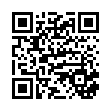Y3842663 TS Poster (PDF)
File information
Title: Microsoft PowerPoint - A0_Vertical_Template2.pptx
Author: xz1711
This PDF 1.5 document has been generated by Microsoft PowerPoint - A0_Vertical_Template2.pptx / Nuance PDF Create, and has been sent on pdf-archive.com on 12/03/2017 at 01:24, from IP address 144.32.x.x.
The current document download page has been viewed 341 times.
File size: 508.66 KB (1 page).
Privacy: public file

File preview
Student number: 203044208
DEPARTMENT OF PSYCHOLOGY
Department of Psychology , University of York
Introduction
80
60
60
40
40
20
0
25
15
10
9
Young adults
45
33
Low
Middle
High
20
Middle-age adults
Elderly adults
Age group
Based on the results, we can conclude that age and
household income both play an important role in donation
amount. The younger the participants are, the less they are
willing to donate. In addition, the richer tend to donate
higher proportion amount than the poor which is inconsistent
with our hypothesis. The main reason may be that the
proportion here may be different from the actual situation.
How they treat the total $100 may be influenced by their
own economic foundation. For example, although the rich
would like to donate $74 out of $100, they may regard $74
as chum charge compared with what they already have in the
real world. Hence, to get more reliable data, further
researches should design scenes which are closer to the
reality.
Figure 1 | The predicted donation amount of
different age groups and household income groups
References
Actual Results:
The results revealed that Age (r=.22, p<.001) and Household
Income (r=.11, p=.013) had a significant small correlation
with the donation amount from the Tuscaloosa task.
However, there was no significant correlation found between
Age and Household Income (r=-.08, p=.073). Subsequently,
an ANOVA was carried out revealing a main effect of Age
(F (2, 509)=9.69, p<.001) and Household Income (F (2,
509)=3.69, p=.026) but a non significant interaction (F (4,
509)=1.29, p=.275) between the two independent variables
(Figure 2).
80
70
66.31
60
50
40
60.33
44.26
44.04
75.64
74
54.8
46.56
Low
Middle
High
Fong, C. M., & Luttmer, E. F. P. (2009). What Determines
Giving to Hurricane Katrina Victims? Experimental
Evidence on Racial Group Loyalty. American Economic
Journal. Applied Economics, 1(2), 64–87.
Pharoah, C., & Tanner, S. (1997). Trends in Charitable
Giving. Fiscal Studies, 18(4), 427–443.
Yao K. (2015). "Who Gives? The Determinants of Charitable
Giving, Volunteering, and Their Relationship". Wharton
Research Scholars, 126.
Acknowledgments
Thanks for the efforts of my team members: Amy Hart,
Jarrod Sparks and Melanie Ratcliffe. Also many thanks to
my supervisors: Shirley-Ann Rueschemeyer and Alex Reid.
41.08
30
Young adults
Middle-age adults
Age group
Elderly adults
Figure 2 | The actual donation amount of different
age groups and household income groups
Contact us
xz1711@york.ac.uk
+44 (0) 1904 320 000
Please scan the QR code to download the poster.
www.postersessi on.com
The amount of participants that took part in the study was
518, after removing the coding for -1 and -2. The task we
undertook was called the 'Tuscaloosa task'. This involved
the participants answering questions where they decided
how much of their lottery winnings ($100) they would
donate to charities based in Tuscaloosa after the hurricane
Katrina disaster. The first independent variable is 'Age of
participant', split into 3 groupings : Younger adults: 18-34
years old; Middle-aged adults: 35-64 years old; Elderly
adults: over 65 years old (including 65). The second
independent variable is 'Household Income', split into 3
different bands of income: High group: Less than $5,000 to
$19,999; Middle group: $20,000 to $74,999; Low group:
$75,000 or more. The dependent variable is how much of
their lottery winnings ($100) they donated to the charities.
We plan to run a Factorial Repeated Measures ANOVA on
our data and a correlation.
As Figure 1 shows, we predicted that the lower the age of
the participant and the higher their income, the less they will
donate to charity in the ‘Tuscaloosa’ task.
Donation amount($)
Methods
Predicted Results:
Donation amount($)
The aim of this research is to test if age and household
income will influence donation amount based on a big
database from the research of Fong and Luttmer (2009).
Pharoah and Tanner (1997) state that individuals that are in
their 20’s and early 30’s give less than people that are
middle aged or older, so studying age as a variable allowed
us to see if the generational trend of the young giving less
is continuing. In relation to household income, younger
individuals tend to have lower incomes and a study by Yao
(2015) found, ‘charitable givings are not based upon
upbringings, but the ability to donate’. The poor tend to
donate a lesser total amount but they give proportionately
higher amounts in relation to their income than the wealthy.
This led to us analysing whether the younger generations
are not giving as much to charities because they simply
cannot afford to, or that they don’t see it as an important
thing to do. Based on these findings, our last variabledonation amount involved testing whether overall, older
individuals of a lower income give more proportionally
than younger, wealthy individuals; which ties back into the
first two variables.
Conclusions
Results
www.postersession.com
Download Y3842663-TS-Poster
Y3842663-TS-Poster.pdf (PDF, 508.66 KB)
Download PDF
Share this file on social networks
Link to this page
Permanent link
Use the permanent link to the download page to share your document on Facebook, Twitter, LinkedIn, or directly with a contact by e-Mail, Messenger, Whatsapp, Line..
Short link
Use the short link to share your document on Twitter or by text message (SMS)
HTML Code
Copy the following HTML code to share your document on a Website or Blog
QR Code to this page

This file has been shared publicly by a user of PDF Archive.
Document ID: 0000567752.